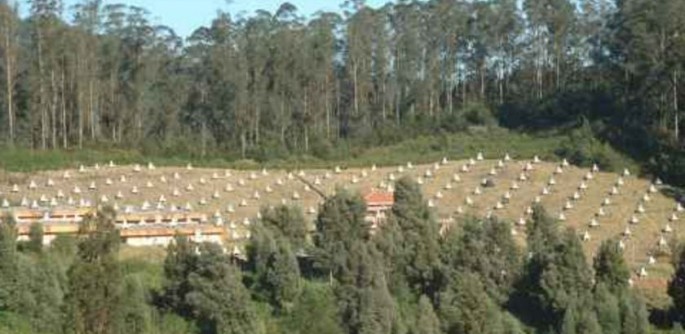The Earth's magnetosphere or magnetic shield temporarily cracked and has weakened since being hit by a powerful solar storm on June 22, 2015. This penetration of the magnetic shield left us temporarily vulnerable and exposed to deadly cosmic radiation, said scientists in a new study.
Scientists studying this fierce coronal mass ejection (CME) from the Sun came to this conclusion after carefully studying data from the GRAPES-3 Experiment's tracking muon telescope in the city of Ooty in India. GRAPES 3 is an acronym for "Gamma Ray Astronomy at PeV EnergyS 3rd establishment."
The GRAPES-3 tracking muon telescope measures muon intensity at high cutoff rigidities (15 GV to 24 GV) along nine independent directions covering 2.3 sr. A muon is an unstable subatomic particle.
GRAPES-3 data also shows the magnetosphere came under such heavy CME bombardment in recent years that it weakening. But on June 22, 2015, a massive burst of galactic cosmic rays from a CME battered the magnetic shield for two hours.
Scientists discovered the weakening and cracking of the magnetosphere were caused by heavy bombardment of the Earth's magnetic field by high-energy cosmic rays after a massive CME.
The Sun unleashed a massive cloud of plasma associated with a surge of high-energy radiation that hit the magnetosphere at 2.5 million kilometers per hour. The impact also triggered a violent geomagnetic storm that generated a supercharged aurora borealis and widespread radio signal blackouts in North and South America.
The analysis, conducted by experts at the Tata Institute of Fundamental Research (TIFR), used data from GRAPES-3 to run multiple simulations of the impact of the cosmic ray bombardments on the magnetosphere.
The simulations revealed the radiation caused multiple small cracks in the magnetosphere that exposed the Earth to potentially harmful radiation. Scientists were also worried to discover the intense bombardment caused the magnetosphere to shrink from 11 times to four times the Earth's radius.
"The occurrence of this burst also implies a two-hour weakening of Earth's protective magnetic shield during this event," said the study. "It indicates a transient weakening of Earth's magnetic shield."
But the magnetosphere has since recovered from the damage and weakening after the bombardment subsided, scientists said.
Sufficiently powerful cosmic ray bombardments of the magnetosphere might "reconfigure" and disrupt the Earth's magnetic shield based on data analysis and simulations.
Scientists noted the results of their study have far-reaching implications because the Earth's magnetosphere is very vital to life on Earth since it shields the atmosphere from deadly cosmic rays.



























